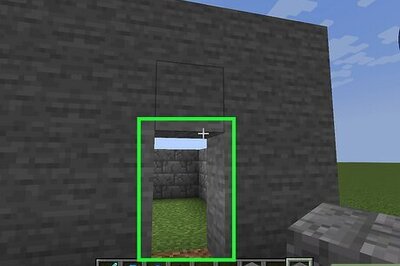Number of People in India's Cities Will Overtake Rural Population in Next Three Decades, Says Report

views
“The soul of India lives in its villages.” This quote by Mahatma Gandhi could soon become a misnomer as the latest United Nations (UN) report on population suggests that India’s urban population will take over the rural population by the end of 2050.
The report published by UN speculates the overall change in population in the coming century.
The report has taken cognizance of many aspects of the population such as population growth, aging, migration, and urbanization. If we take a look at the trends of urbanization and migration, it seems like the urban population will exceed the rural population by the end of 2050.
The report speculates that by 2050, the urban population will have increased to 87.7 million and the rural population will account for 78.3 million people. However, this overhaul will take place somewhere after 2045 itself, suggests the data.
The urban population of India has seen a rise from 17.1 per cent to 29.2 per cent between 1950 and 2015. Meanwhile, the rural population declined from 82.9 per cent (in 1915) to 2015's 67.2 per cent. The speculation for the year 2050 suggests that the urban-rural segregation will be 52.8 and 47.2 with a difference of 5.6 per cent.
The population growth rates in both urban and rural areas suggest a similar story. The urban rate has consistently overpowered the total population growth rate over the last seventy years. This trend is set to continue for the next 30 years.
There was a clear increase in the population growth rate from 1950 to 1975. But, the growth rate took a hit as a result of the forced sterilization program under the Indira Gandhi government.
Though the effect was not as evident in rural parts, the overall rate of population growth declined in those years. It came down to 1.23 from the all-time high figure of 2.31 during 1975-80.
The urban population saw a steep decline following the implementation of the sterilization program with the growth rate decreasing to 3.35 from 3.84 in the year 1975.
The report suggests that the rural population growth rate will turn negative in the next fifteen years. Thus, in 2050, it is expected to be 1.06, in contrast to the urban growth rate of 1.54.
The report suggests that the rate of urbanization, which has been increasing since 1950, is expected rise further till 2035. It is supposed to start decreasing slightly in the next few years.
Within a decade of globalization, the rate of urbanization increased by one-third of its previous growth. This has resulted in stress on the country's urban conglomerations; Delhi, Chennai, Kolkata, and Mumbai being four among them.
The swelling of the population in the cities has been a result of labour migrations that have taken place in the past decade because of industrial growth. This created millions of employment opportunities for the rural poor.
The national capital, Delhi, especially has seen an explosion of population. It saw a 26-time increase since 1950 when the population was just a million people. The current population of the national capital is 28 million, which equals to half of the population of all the ten ASEAN country capitals combined.
Kolkata has seen a three-time increase in the urban population while Mumbai's population has increased by over six-fold since 1950. Bengaluru, the new entrant on the list, in 2015 crossed the 10 million-mark, ten times the number of people in 1950s. All these cities will see a further rise in the population in the next fifteen years.
The number of urban agglomerations consisting more than a million people is also expected to be doubled by 2035.
















Comments
0 comment